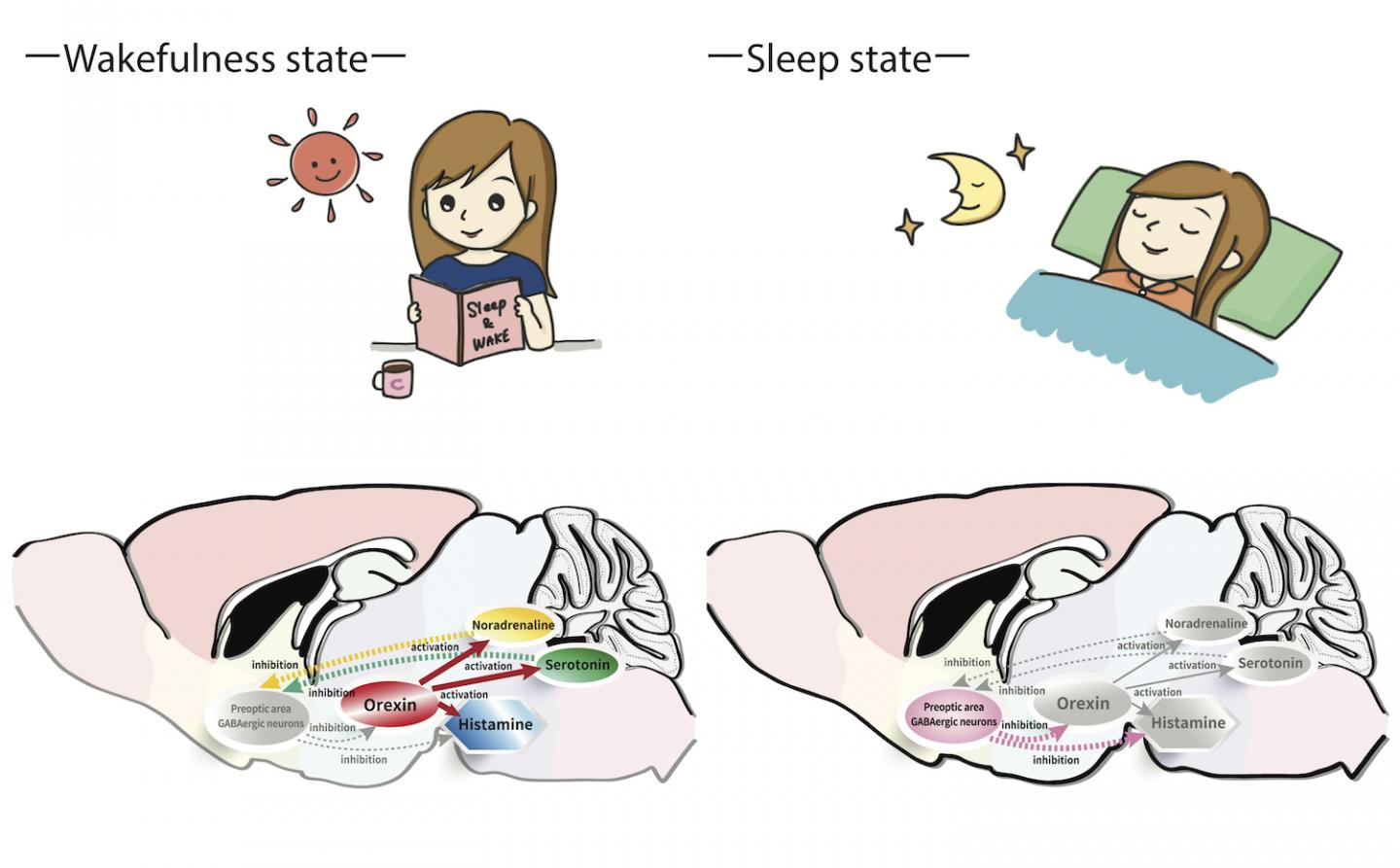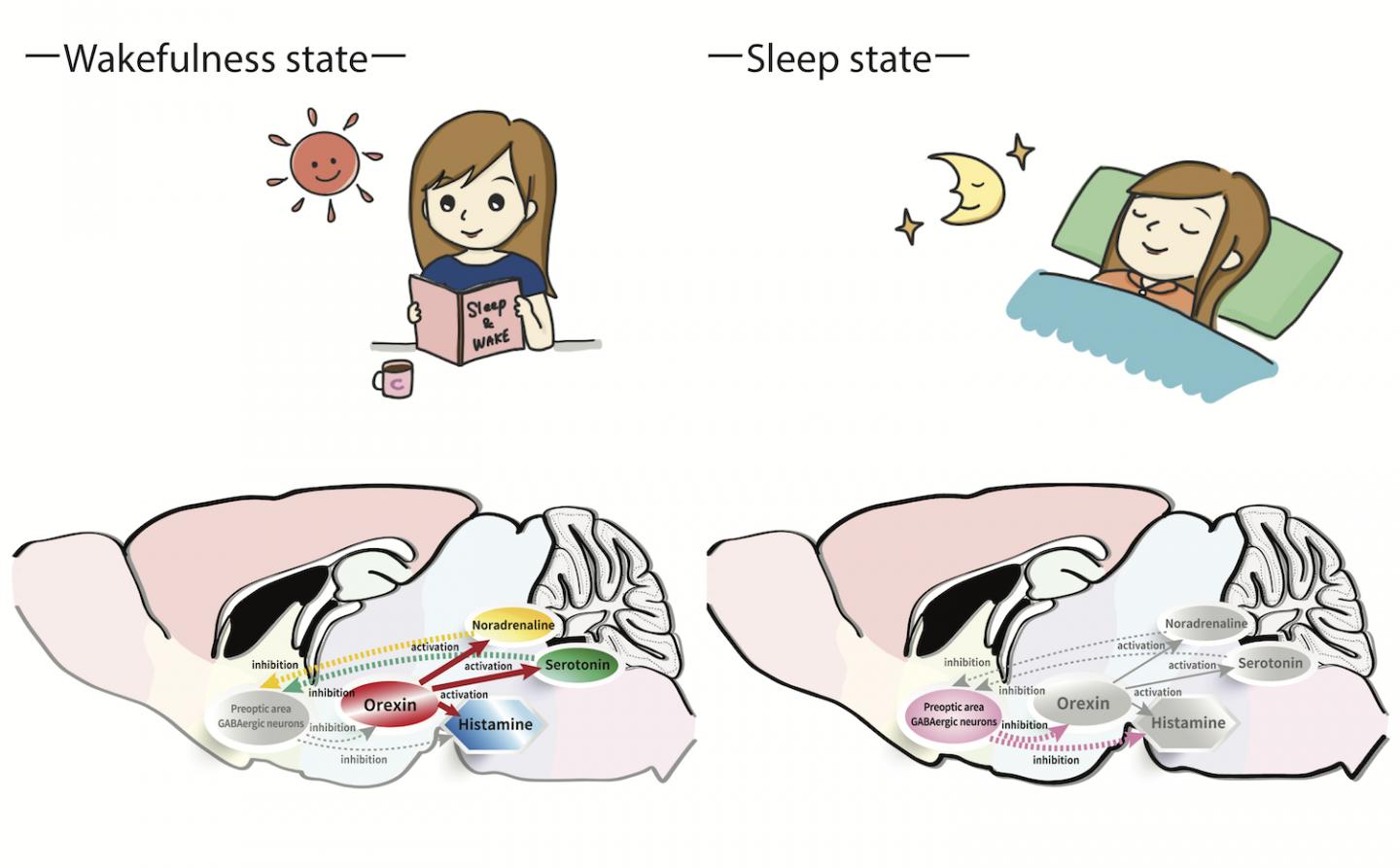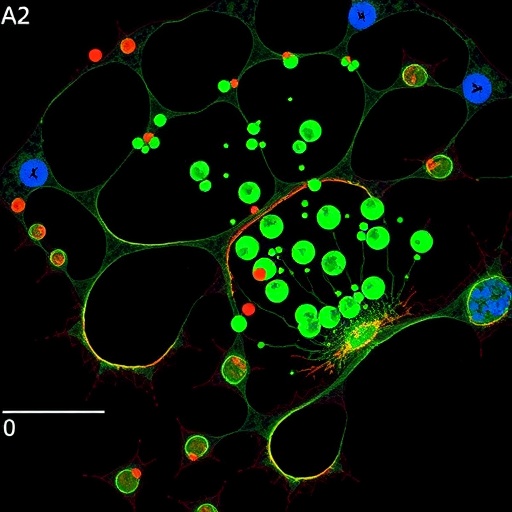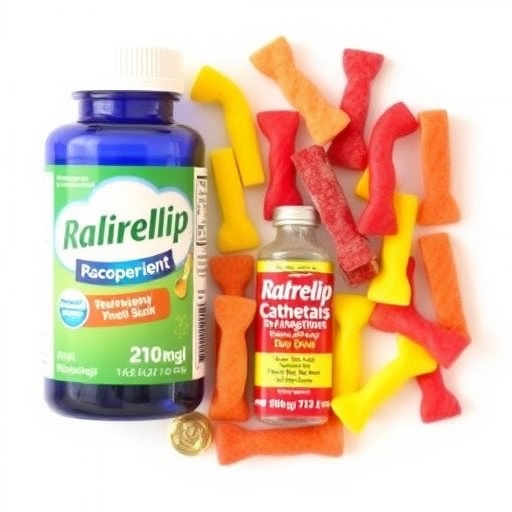
Credit: University of Tsukuba
Sleep is an autonomic process and is not always under our direct, voluntary control. Awake or asleep, we are basically under the regulation of two biological processes: sleep homeostasis, commonly known as 'sleep pressure', and the circadian rhythm, otherwise known as the 'body clock'. These two processes work in harmony to promote good consolidated sleep at night.
The ventrolateral preoptic nucleus (VLPO) in the brain plays a critical role in falling–and staying–asleep, while the lateral posterior part of the hypothalamus contains neurons (brain cells) that play a role in the maintenance of staying awake, including orexin neurons in the lateral hypothalamic area (LHA) and histaminergic neurons in the tuberomammillary nucleus (TMN). To date, however, the precise connectivities among these cell populations remain unclear.
"In our study, we aimed to identify the important players implicated in arousal regulation," explains Yuki Saito, who co-led a University of Tsukuba-centered study recently reported in The Journal of Neuroscience.
"To achieve the study objective, we focused on populations of hypothalamic neurons, histidine decarboxylase-positive (HDC+) histaminergic neurons (HDC neurons) in the TMN and orexin neurons in the LHA," adds co-lead author Takashi Maejima.
The team used recombinant rabies-virus-mediated trans-synaptic retrograde tracing in the mouse brain to analyze the architecture and function of hypothalamic circuits that link neuronal populations implicated in sleep/wakefulness regulation. They found that these arousal-related neurons are heavily innervated by GABAergic neurons in the preoptic area, including the VLPO.
The team further characterized GABAergic neurons in the VLPO (GABAVLPO neurons) that make direct synaptic contact with hypothalamic arousal-related neurons. These two groups of neurons were overlapped each other, and both potently inhibited by the hormones noradrenaline and serotonin, showing typical electrophysiological characteristics of sleep-promoting neurons in the VLPO.
"Taken together, our findings provide direct evidence of monosynaptic connectivity between GABAVLPO neurons and hypothalamic arousal neurons and identifies the effects of monoamines on these neuronal pathways," says study corresponding author Takeshi Sakurai. "This information is important for us to gain a deeper understanding of mechanisms that control sleep and wakefulness, which may lead to the development of reliable recommendations for a restful sleep."
###
Media Contact
Masataka Watanabe
[email protected]
81-298-532-039
Related Journal Article
http://dx.doi.org/10.1523/JNEUROSCI.2835-17.2018





